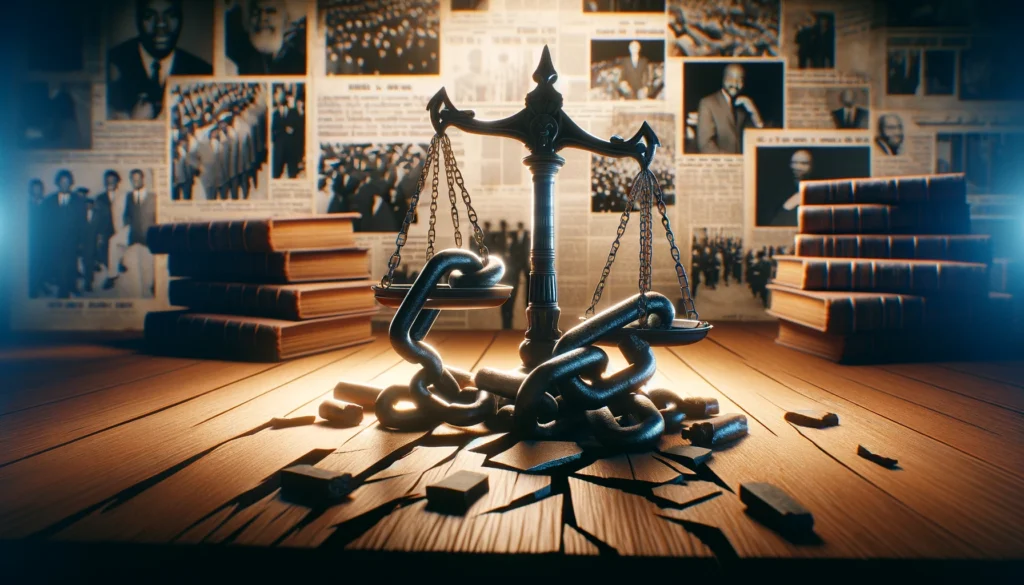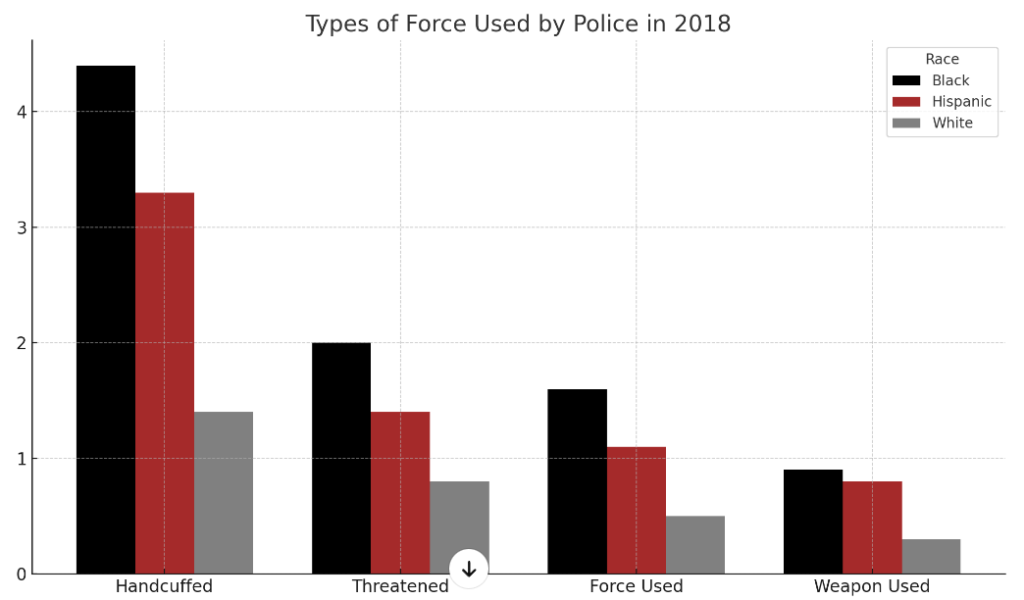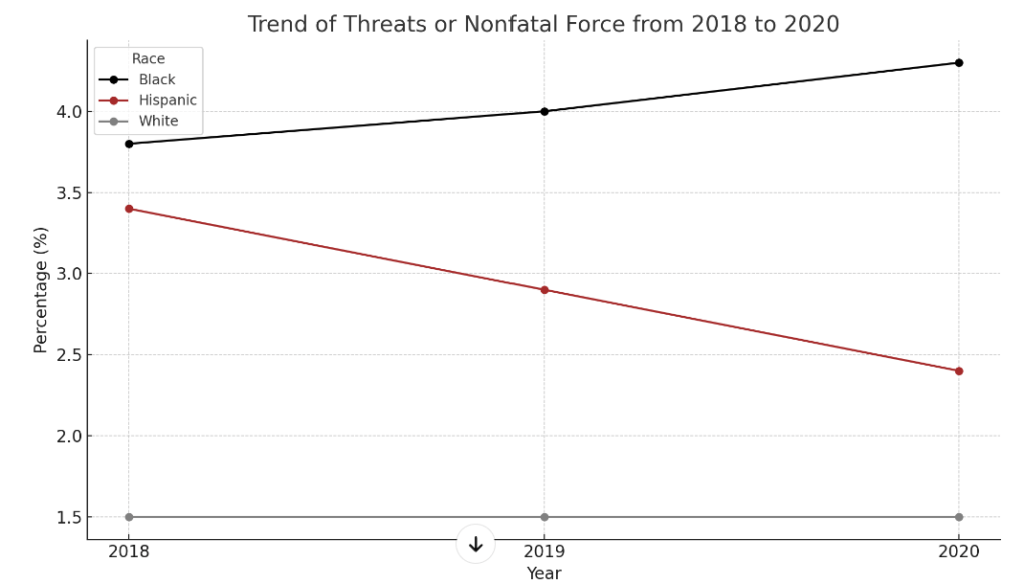
Discover the enduring fight for justice and equity in American policing, where historical challenges meet modern reforms.
By Darius Spearman (africanelements)
Support African Elements at patreon.com/africanelements and hear recent news in a single playlist. Additionally, you can gain early access to ad-free video content.
| Key Takeaways |
|---|
| Historical racial biases in American policing have roots in practices established to control African American communities. |
| Landmark legal cases continue to spotlight systemic racial discrimination, emphasizing the need for reforms in law enforcement. |
| Community activism plays a crucial role in driving policy changes and fostering a dialogue on police reform. |
| Modern challenges in law enforcement call for enhanced legal frameworks, transparency, and community-police partnerships to ensure accountability. |
| Future reforms must focus on equitable practices, including training in cultural sensitivity and bias awareness to build trust and improve police-community relations. |
Introduction: Unraveling the Threads of Racial Injustice in Policing
The intersection of race and law enforcement in America is fraught with deep-seated tensions, historically rooted in systemic racial discrimination. These tensions underscore the urgent need for profound understanding and reform. Moreover, recent incidents have reignited the call for significant police reforms, pushing this critical issue to the forefront of national discourse. Consequently, this exploration delves into the historical and ongoing impact of racial biases within American policing, aiming to illuminate pathways toward substantial and enduring reforms.
The Roots of Racial Injustice in American Policing
The history of policing in America is deeply intertwined with racial injustice. Initially, law enforcement practices were established to control and suppress African American communities, setting a precedent for today’s disparities in law enforcement interactions.

Historical Enforcement Practices
Policing strategies historically aimed to enforce segregation and suppress civil rights, particularly in African American communities. Thus, this enforcement contributed to long-term distrust between these communities and law enforcement. Reflecting on these practices helps us understand the current tensions. The recent video footage of a Georgia corrections officer wrapping a chain around the neck of Tremar Harris, a Black inmate, further demonstrates this point.
“This case is a disturbing reminder of the broader systemic issues facing our penal system” (NewsOne).
Significant changes occurred in law enforcement practices after the Civil Rights Movement. However, the fundamental issues of racial bias often persisted beneath these surface-level reforms. Additionally, cases like Tremar Harris highlight these issues, emphasizing the need for deeper reforms.
Modern Challenges and Responses
Today, the disproportionate impact of police brutality on African Americans continues to ignite national debates and calls for reform. Clearly, understanding the historical context is crucial for addressing these systemic issues. Moreover, ongoing investigations and lawsuits, such as those involving Tremar Harris, are key to driving change.

Landmark Cases Illuminating Racial Discrimination in Policing
Landmark legal actions have spotlighted systemic racial discrimination in law enforcement. Additionally, each case draws attention and sparks essential dialogue on reform.
The Impact of High-Profile Incidents
High-profile cases often act as catalysts for national discussions. For instance, the Tremar Harris case illustrates the severity of racial biases, compelling society to confront these painful realities.
“The video clearly shows the unwarranted aggression against Mr. Harris” (NBC 15).
Legal outcomes can lead to policy revisions and sometimes broader legislative changes. Clearly, tracking these cases helps gauge progress toward equitable law enforcement, influencing public trust and policy.
“This lawsuit adds to the national outcry for justice and reform in policing practices” (Miami Herald).
The Role of Public Advocacy
Public advocacy plays a crucial role in driving reforms, with community engagement and activism being pivotal. Thus, the combined pressure of legal action and public advocacy fosters change.
Navigating the Path to Reform: Legal Systems and Police Accountability
The quest for effective law enforcement reforms continues to challenge communities and policymakers alike. Each legal decision influences the trajectory toward greater accountability.
Legal frameworks must evolve to address racial biases in policing effectively. Therefore, new laws and regulations are essential and must be robust enough to enforce accountability consistently.
Oversight bodies play a critical role in ensuring transparency and can deter misconduct. Consequently, strengthening these institutions is pivotal for reform.
“This lawsuit is not just about compensation, but about reforming law enforcement practices” (NewsOne).
Amplifying Voices: Community Activism and Policy Change
Community involvement is crucial in driving policy change and reform in policing practices. Without question, activism fuels the push for justice and equality. Activists and community leaders play pivotal roles in mobilizing support and bringing critical issues to the forefront of public and political agendas, highlighting the urgent need for comprehensive reforms.
“We demand a thorough investigation and accountability for any wrongdoing” (NewsOne).
Amplifying the voices of those most affected by police misconduct ensures that their experiences and demands are central to the reform agenda, with advocacy groups playing a key role in this amplification.
“We are using this moment to push for meaningful changes in how our community is policed” (Miami Herald).
Sustained engagement and persistent pressure are necessary to achieve long-term change, ensuring that momentum is not lost and maintaining public attention on these issues. Community activism responds to incidents of injustice and works proactively to prevent future occurrences, making this engagement essential for creating a just and equitable policing system.
Charting the Future: Envisioning Comprehensive Police Reforms
The pursuit of comprehensive police reforms is essential for ensuring justice and preventing future abuses, requiring a clear strategy and commitment.

Policy changes are foundational to reform, with new guidelines critical to de-escalation and accountability and requiring enforceable and strict compliance measures.
“Our investigation will be thorough, impartial, and pursued with diligence” (NBC 15).
Training in cultural sensitivity and bias awareness is vital, with ongoing education programs fundamentally changing police interactions with communities and helping build bridges of understanding and respect.
“The department is under the microscope, and we must ensure our policies protect and serve all citizens equally” (Miami Herald).
Conclusion: Envisioning a Future of Equitable Law Enforcement
Navigating the complexities of reforming America’s police forces is undeniably challenging yet undeniably essential. By dissecting the historical roots of racial injustice within law enforcement, we uncover crucial insights that can inform the direction of modern-day reforms. Furthermore, the role of continuous advocacy, impactful legal actions, and robust community involvement are paramount in propelling these changes. Therefore, maintaining engagement and dedication among all stakeholders is vital. Ultimately, achieving a just and equitable policing system demands resilience, understanding, and collective efforts. Thus, with unwavering commitment, we can aspire to a future where justice consistently upholds the core of policing.
FAQ
Q: What historical practices contribute to racial bias in American policing?
A: Racial biases in policing trace back to practices established to control African American communities, including the enforcement of segregation laws and suppression of civil rights.
Q: How do landmark legal cases influence police reforms?
A: Landmark cases spotlight systemic racial discrimination and are crucial in driving national discussions and legislative changes for police reform.
Q: Why is community activism important in policing reform?
A: Community activism mobilizes support and pressure, essential for achieving policy changes and ensuring that reforms address the real needs and concerns of affected communities.
Q: What are the key components of effective police reform?
A: Effective reform includes enhanced legal frameworks, transparency, and the fostering of community-police partnerships that enhance trust and cooperation.
Q: How can police departments build better relationships with their communities?
A: Police departments can build better relationships by engaging in community policing initiatives, improving communication, and implementing training programs that focus on cultural sensitivity and bias awareness.
About the author
Darius Spearman is a professor of Black Studies at San Diego City College, where he has been pursuing his love of teaching since 2007. He is the author of several books, including Between The Color Lines: A History of African Americans on the California Frontier Through 1890. You can visit Darius online at africanelements.org.
